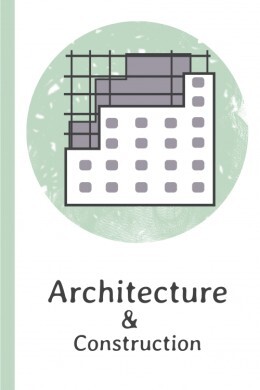Architektura a Stavba - Asijská a egyptská architektura
Zde se naučíte některá anglická slova související s asijskou a egyptskou architekturou, jako jsou "čajovna", "hanok" a "pylon".
Revize
Kartičky
Pravopis
Kvíz

a traditional style of Japanese tea houses and residential architecture associated with the tea ceremony, known for its simplicity, natural materials, and integration with the surrounding garden

sukiya-zukuri, sukiya styl
a traditional Japanese architectural style characterized by the use of wooden screens, tatami mats, and decorative alcoves

shoin-zukuri, tradiční japonský architektonický styl charakterizovaný použitím dřevěných obrazovek
a style of aristocratic residential architecture characterized by a large main hall surrounded by smaller buildings, often seen in palaces and noble estates during the Heian period

shinden-zukuri, styl shinden-zukuri
a style primarily used for Shinto shrines dedicated to Hachiman, characterized by a symmetrical gabled roof with two entranceways and verandas

hachiman-zukuri, hachiman-zukuri styl
a style used for shrines associated with mountain worship, featuring a distinctive blend of Buddhist and Shinto architectural elements

gongen-zukuri, styl gongen-zukuri
a style of shrine architecture characterized by a curved, thatched roof, often resembling the shape of a wave, commonly seen in shrine halls

nagare-zukuri, styl architektury svatyně charakterizovaný zakřivenou doškovou střechou
a Japanese architectural style featuring layered roofs and symmetrical layouts seen in imperial and aristocratic buildings

Styl Teikan, Architektonický styl Teikan
a traditional wooden townhouse found in Kyoto, Japan, known for its narrow frontage and deep interior design

machiya, tradiční dřevěné městské domy v Kjótu
a traditional Japanese gate commonly found at the entrance of Shinto shrines, characterized by two vertical pillars and a horizontal lintel, often painted in red and symbolizing the transition from the secular to the sacred

torii, tradiční japonská brána
a religious structure in Japan dedicated to the worship of kami, the spirits or deities of nature and ancestors, often characterized by a distinctive architectural style, torii gates, and various ritual elements

šintoistická svatyně, šintoistický chrám
a meditation hall or space, typically associated with Zen Buddhism, where practitioners gather for silent seated meditation and other related practices

zendo, meditační místnost zen
a place where tea is served, often accompanied by snacks or light meals

čajovna, dům čaje
a peaceful Japanese-style garden with rocks, sand or gravel, and minimal plants, created to promote tranquility, meditation, and a harmonious connection with nature

zenová zahrada, meditační zahrada
a traditional Japanese architectural ornamentation in the form of a demon or ogre mask, often made of clay or ceramic, placed on the edges of roofs or walls to ward off evil spirits and bring protection to the building

onigawara, tradiční japonská dekorativní maska démona
a multi-story temple located in East or South Asia with a curved roof at each story

pagoda, vícepatrový chrám
a traditional Chinese architectural element consisting of interlocking wooden brackets that support the roof and transfer the weight of the structure to the columns or walls

dougong, tradiční čínský architektonický prvek sestávající se z propojených dřevěných konzol
traditional Korean houses with distinctive architectural features, including wooden frames, paper sliding doors, and curved roofs, reflecting the cultural heritage of Korea

hanok, tradiční korejský dům
a circular or semi-circular opening found in traditional Chinese gardens and architecture, typically made of stone or wood, creating a framed entrance or window that symbolizes harmony and good fortune

měsíční brána, portál ve tvaru měsíce
a type of ancient Egyptian tomb structure characterized by a rectangular, flat-roofed design with sloping sides, typically consisting of an underground burial chamber and a superstructure above ground

mastaba, mastaba hrobka
a small structure or room within an ancient Egyptian temple or tomb complex where offerings, rituals, and prayers were conducted to honor and provide for the deceased or deities

obětní kaple, obětní modlitebna
an underground structure or chamber, often used as a tomb or sacred space, typically found in ancient civilizations such as Egypt and Rome, and characterized by its subterranean location and architectural features

hypogeum, podzemní struktura
a type of ancient Egyptian temple built near or connected to a royal tomb, dedicated to the worship and commemoration of a deceased pharaoh, serving as a place for rituals, offerings, and the veneration of the ruler's spirit

pohřební chrám, smuteční chrám
a monumental gateway of an ancient Egyptian temple formed by two tapered towers flanking a central entrance, symbolizing the horizon

pylon, egyptský pylon
a large hall with a roof supported by many columns

hypostyl, hypostylní síň
a stone monument built in ancient Egypt usually as a tomb for the pharaohs, which has a triangular or square base that slopes up to the top

pyramida, pyramidální památník
a small, enclosed chamber or room, typically found in ancient Egyptian tombs, where the statue or representation of the deceased person was placed for worship or remembrance

serdab, pohřební komora
an architectural element in ancient Egyptian tomb and temple architecture that resembles a real door but is not functional

falešné dveře, imitace dveří
| Architektura a Stavba |
|---|